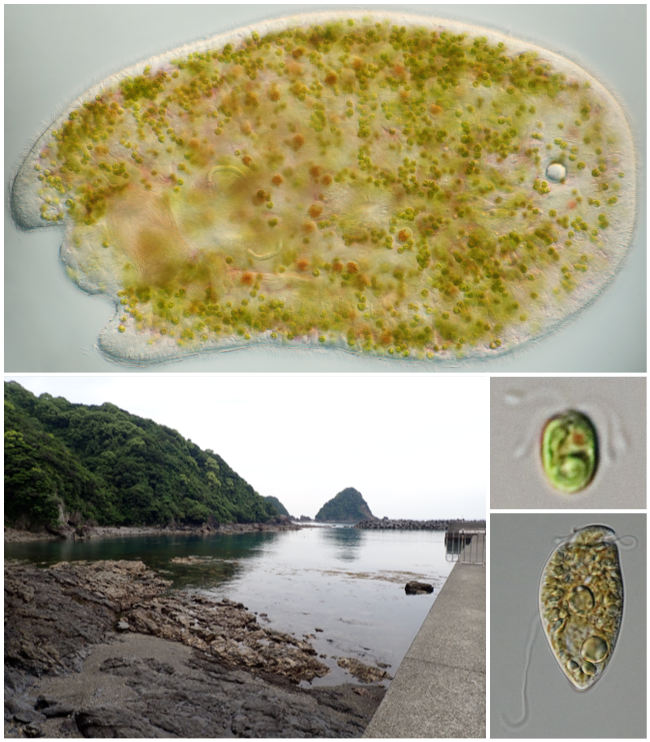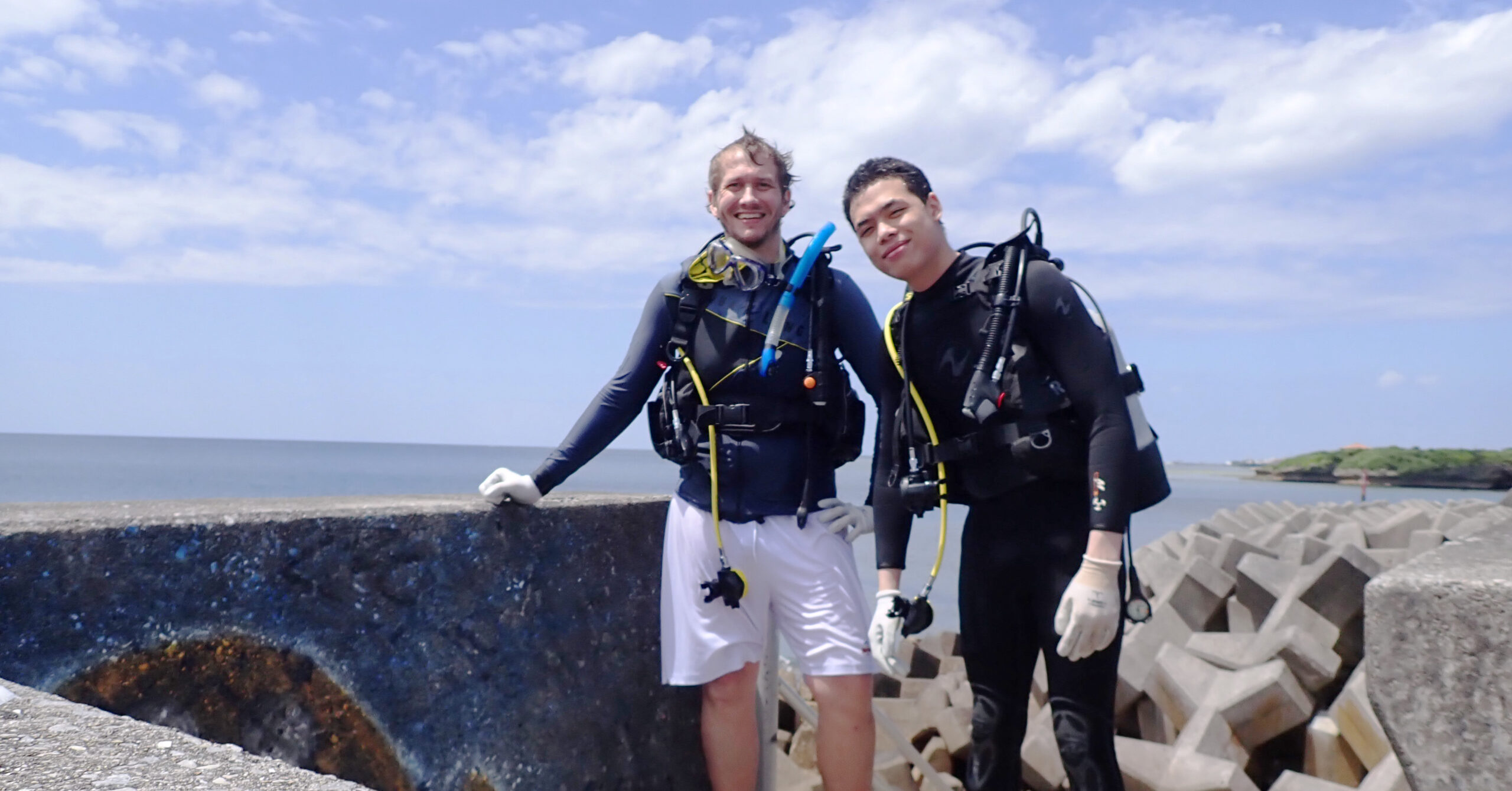Shining a light on tiny, solar-powered animals
Research Press Release | October 05, 2023
Acoels have been found to host a wide diversity of symbiotic, photosynthetic microalgae.
Animals and plants need energy. Some animals get energy by eating other animals, and many plants harvest the energy in sunlight through photosynthesis. However, in the ocean, there exists a remarkable group of small, worm-like animals called acoels that do both—some acoels form relationships (symbiosis) with single-celled, photosynthetic microalgae.

An acoel (top) with two types of symbionts collected in Kochi, Japan (bottom left). The green-colored spots in the acoel are green algal (Tetraselmis) symbionts (middle right) and the brown-colored spots are dinoflagellate symbionts (bottom right). (Photos: Kevin Wakeman and Siratee Riewluang)
A study by Assistant Professor Kevin Wakeman and his undergraduate student, Siratee Riewluang, at Hokkaido University, Japan, has shed some light on the biodiversity underpinning symbiotic relationships between acoels and microalgae. Their findings were published in the journal PeerJ.
Acoels are superficially simple. However, this simplicity is misleading. Due to their regenerative ability and position as one of the first animal groups on the planet, acoels interest biologists in the fields of evolutionary biology, regenerative biology, and neurobiology. Some acoels also form symbiotic relationships with microalgae. This includes green algae and other types of microalgae that also associate with coral reefs called dinoflagellates.
“These acoels engulf microalgae seemingly as ‘food’, but they do not digest them. Instead, they store them below their outer surface. They create energy using sunlight—much like adding solar panels to your house,” explained Siratee.
“Photosynthetic acoels are mostly found in warmer waters. Therefore, we focused our sampling in Southern Japan. We also found acoels near Kochi, a region of Japan that receives warm water from the Kuroshio Current. Photosynthetic acoels can be difficult to spot—they are microscopic. But, under a microscope they are easily recognizable, by their brightly colored algae,” Siratee continued.
Throughout 2022, Wakeman and Siratee collected algae and sediment samples. The host acoel and their symbionts were identified by DNA sequencing. Symbiotic microalgae were removed from acoel hosts and put into culture. This study found that acoels contained various green algae (Tetraselmis); previously, only one species was known. Several dinoflagellate lineages were also found. Most belonged to the Symbiodiniaceae, a group famously associated with coral (and other invertebrates). Some of these Tetraselmis and dinoflagellates might be new to science.
Unexpectedly, Wakeman and Siratee came across what might turn out to be a whole new group of acoels harboring symbionts (only one group is currently known).

An acoel with dinoflagellate symbionts (brown color). The acoel was collected from Okinawa, Japan, and was about 1 mm in length. This particular acoel is of interest because it may be a new group of acoels containing symbiotic microalgae. (Photos: Kevin Wakeman and Siratee Riewluang)
“We found that there was more diversity of acoels and their symbionts than we really expected,” said Wakeman. “Even in this present dataset, which focuses on Japan, it’s clear that there are fascinating interactions between acoels and microalgae. These results will lay the groundwork for future studies that can tease apart what are probably some interesting ecological mechanisms. I really am excited to see where this ends up.”
Wakeman and Siratee will continue work on photosynthetic acoels for Siratee’s Master’s. “It would be cool to figure out if they really are a new group of acoels with symbionts, but we need more genetic data and unambiguous morphological data to confidently assign a new name,” said Siratee. “Eventually, I would like to use advanced imaging and genetics to explore these acoels at a molecular level.”

Kevin Wakeman (left) and Siratee Riewluang (right) collecting samples in Okinawa, Japan. (Photos: Kevin Wakeman and Siratee Riewluang)
Original Article:
Siratee Riewluang, Kevin C. Wakeman. Biodiversity of symbiotic microalgae associated with meiofaunal marine acoels in Southern Japan. PeerJ. October 5, 2023.
DOI: 10.7717/peerj.16078
Funding:
This work was supported by the Japan Society for the Promotion of Science (JSPS; 18K14774) and the Integrated Science Program (ISP) at Hokkaido University.
Contacts:
Assistant Professor Kevin C. Wakeman
Institute for the Advancement of Higher Education
Hokkaido University
Tel: +81-11-706-2741
Email: wakeman.k[at]oia.hokudai.ac.jp
Sohail Keegan Pinto (International Public Relations Specialist)
Public Relations & Communications Division
Office of Public Relations and Social Collaboration
Hokkaido University
Tel: +81-11-706-2186
Email: en-press[at]general.hokudai.ac.jp
